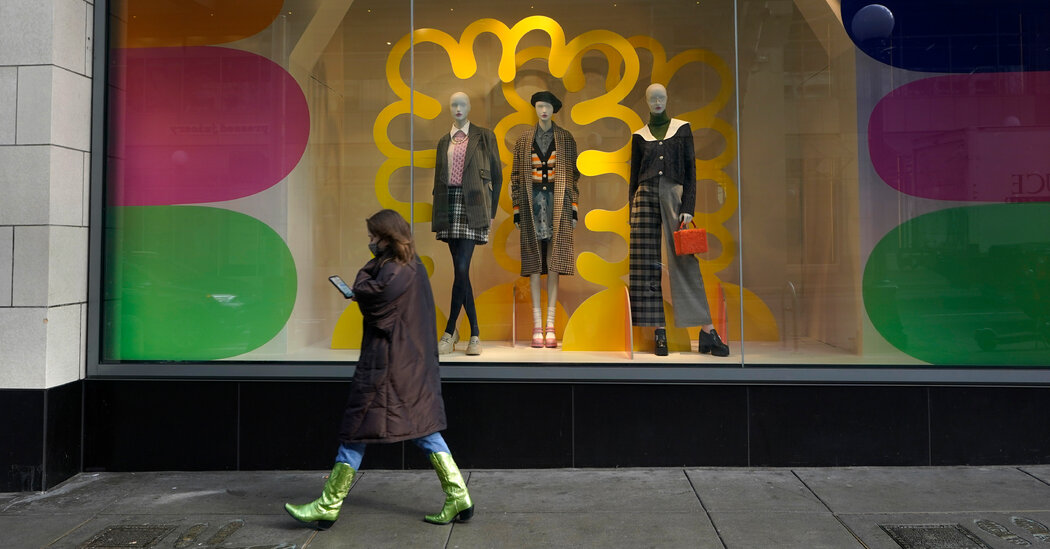American workers are quitting at record rates, suggesting that they’re confident they can easily find new jobs. Wages are rising rapidly, suggesting that labor currently has a lot of bargaining power. These are the hallmarks of an economy at or near full employment. At the same time, inflation is running uncomfortably high.
All of this says that it’s time for the Federal Reserve to cool things down, which it has indeed said it will do; it’s planning a series of interest rate hikes over the year ahead, with the pace of those hikes dependent on the data.
But can the Fed pull this off without sending us into a recession? It will be tricky, for reasons I’ll get to. But I keep seeing people drawing parallels between recent inflation and the inflation of the 1970s, with the implication that disinflation will be as ugly as it was last time. So it’s important to understand why that comparison is misleading.
The end of the ’70s inflation was indeed extremely ugly. Paul Volcker’s tight-money policies eventually brought inflation down to tolerable levels but only at the cost of a huge surge in unemployment:
Why was disinflation so hard? Because expectations of continuing inflation had gotten deeply entrenched in the economy, so businesses kept raising prices even in the face of high unemployment (which is what we mean when we say “stagflation”). It took years of pain to break the wage-price spiral.
What about now? I’ve been spending some time with the Michigan Surveys of Consumers, which since 1946 have been asking Americans what inflation they expect over the next year and over the next five years. In 1980, the median answers to these two questions were similar; for example, in February 1980, one-year expected inflation was 10 percent, five-year expected inflation 9.7 percent.
Now, however, they’re quite different. Here’s a chart of the Michigan data over the past year:
One-year expectations have gone up a lot; five-year expectations, much less. What’s that third line? I’ve used the one-year and five-year numbers to extract an implied prediction for average inflation rate over the next two to five years.
Here’s how that works: Imagine that people expected 5 percent inflation this year, but only 2 percent after that. Then, they’d expect prices over the next five years to rise by 13 percent — (4⨉2) + 5 — with an average inflation rate over the whole period of 2.6 percent per year. (Dear math nerds: I know that’s only an approximation. But it’s good enough for government work.) What I’ve done is invert that calculation, asking what future inflation rate would be consistent with people’s one-year and five-year expectations.
What the chart shows is that while Americans have sharply increased their expectations for inflation over the near future, they don’t expect that inflation to persist.
Why is that a useful thing to know? Not because there’s some wisdom-of-crowds thing going on. Instead, what the chart is telling us is that expected inflation has not (yet?) become entrenched the way it had by the end of the 1970s.
Back to that in a moment. First, let me point out that the inflation pattern consumers appear to expect — a year of rapid price increases followed by a return to modest inflation — would in fact be a good outcome.
As many economists have noted, the pandemic has skewed demand: Nervous consumers have been reluctant to buy services, which often involve face-to-face contact, and have splurged on goods instead:
Supply chains have had problems keeping up with this surge in demand for stuff, leading to much more rapid price increases for goods than for services:
But why have we adjusted through higher goods prices rather than lower service prices? Because history tells us that it’s much easier to raise prices than to cut them. If we’d tried to offset rising prices in supply-constrained sectors by driving down prices elsewhere, we’d have had much slower job growth — and probably wouldn’t have given the private sector as much incentive to reduce the bottlenecks it’s facing.
So a temporary period of elevated inflation, followed by a return to normal, is actually the appropriate economic response to the peculiar stresses of recovery from the pandemic recession — unless higher inflation gets entrenched in expectations. So the evidence that this entrenching isn’t happening is very good news.
Why, then, do I say that pulling off a return to acceptable inflation will be tricky? Because hitting desired economic targets is hard, even when the fundamentals are on your side. We don’t really know what level of gross domestic product is consistent with full employment, nor do we know how high interest rates will have to go to hit any given level of G.D.P. The Fed will adjust its policies based on incoming economic data, but monetary policy acts with a substantial lag, so it can be many months before we know whether interest rates are too low, too high or just right.
But 2022 isn’t 1980: Inflation hasn’t become entrenched. So while there will surely be some bumps along the way, there’s a pretty good chance that the Fed can let us down easy.
Quick Hits
Memories of the Ford administration. No, not the John Updike novel, which was about sex.
Biden’s economic advisers look back at their first year.
The bond market doesn’t seem worried.
Facing the Music
Not actually a plea to the Fed.


























